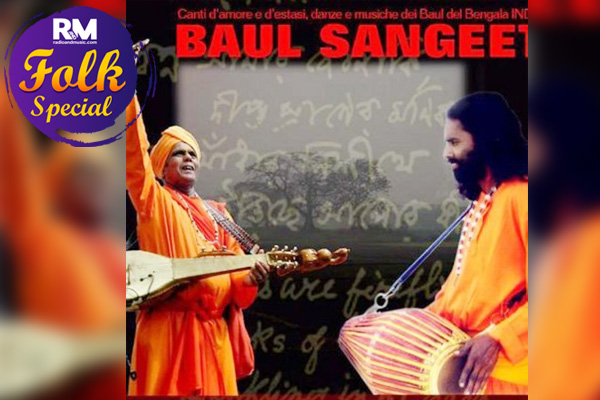For more on radio and music business news. | Click on RNMBiz

MUMBAI: The unique thing about music in, both, India and the Indian Subcontinent is the strong connection with spirituality, it emphasizes on. Every traditional form of music has an intrinsic connection with God. Baul sangeet, of the East, is an example of it. Popularly known as the music of wandering minstrels and mysticism, Baul sangeet is traced back to the Buddhism era and has practitioners of Hinduism as well as of Muslim Sufi streams.
The father of Baul Sangeet, Lalon Fokir, a maverick never wrote down his compositions and his creations and maintained an oral tradition of teaching. Therefore, documentation of this art only began in the generation, following Lalon Fokir, thus, making it rare. The lyrics in this type of music are inspired, heavily, by Bhakti movement and Sufi music.
In today’s time, when music in Bengal is spoken about, Rabindra Sangeet is the first name that surfaces. However, the father of Rabindra Sangeet, Nobel Laureate Rabindranath Tagore, himself, was heavily influenced by Baul Sangeet. The influence is reflected in many of his speeches and works.
A baul musician is typically dressed and, usually, uses ‘Baul’, as his second name. Dressed in rustic apparel and, usually, accompanied by a string instrument called Ektara, Baul singer can captivate you with his music. Similar to Indian classical music, Baul, too, has, time and season, defined melodies, however like every other folk music, it is bound in technicalities of Raagas.
Presently, Baul Sangeet and musicians are found in West Bengal and certain parts of Bihar and Jharkhand. India’s neighbouring country, Bangladesh, which has a large Bengali speaking community, also celebrates this form of music. Celebrating this form of music, India-Bangladesh host a joint festival, annually, called ‘Baul Sangeet Utsab’. This year’s leg of the festival, in Bangladesh, was concluded this weekend and featured the best of Baul sangeetkars from both countries.
Despite, few well-known festivals held in honour of this music form, Baul Sangeet is on verge of extinct. Sadly, if unable to attend these festivals, one can experience Baul Sangeet on the streets and trains of West Bengal.
There are a few well-known Baul Sangeetkars, who have done their bit to promote music in India as well as abroad. Kartick Das Baul is one of the most known names in today’s time. Parvathy Baul, a female baul singer has made her niche for being a path-breaker in this field. Recently, acknowledged by Sangeet Natak Akademi, for her contribution in propagating Baul Sangeet, Parvathy is doing work, beyond just performing music. She is also documenting the tradition for future generations as well as a reference for researchers. Besides, she is also hosting an international Women’s festival of Baul sangeetkars.
To make people, familiar, with this form of music, Kartick Das Baul has formed a folk-fusion band, along with other musicians. Titled, Bolepur Bluez; the band has taken baul sangeet, beyond the borders as well as performed vastly there.
The biggest challenge faced by any form of folk music is usually the language and Baul Sangeet also faces a similar problem. However, the medium of language can’t be changed, as the essence of Baul Sangeet or also known as Sabdo Gaan, is in the narrative. According to Parvathy Baul’s recent interview, she questioned the need for its translation and urged people to learn it.
Though less on glamour quotient but high on content, Baul is facing a challenge of the fast depleting audience. While in the west, the Western Baul was developed by famous spiritual teacher and author, Lee Lozowick, when it comes to India, attention to these forms is necessary.
Watch Kartick Das Baul's Baul Sangeet